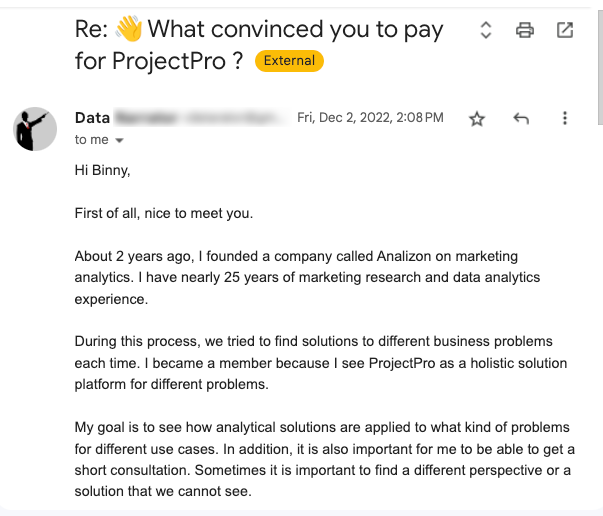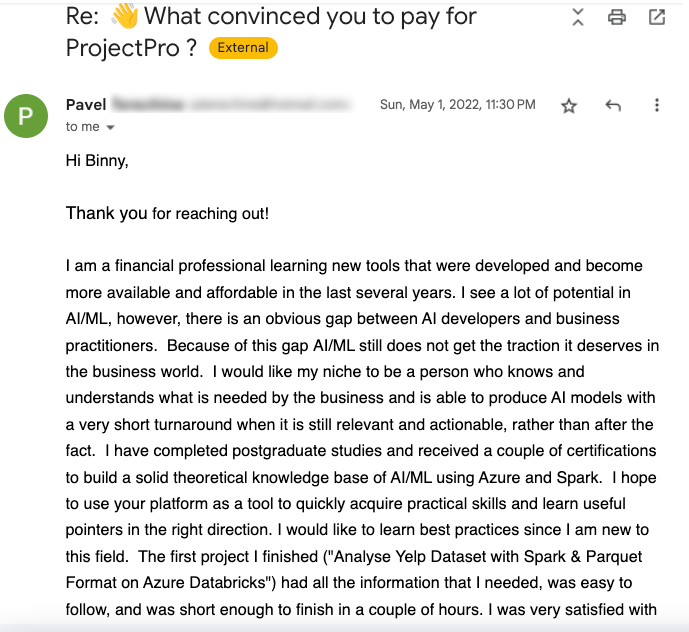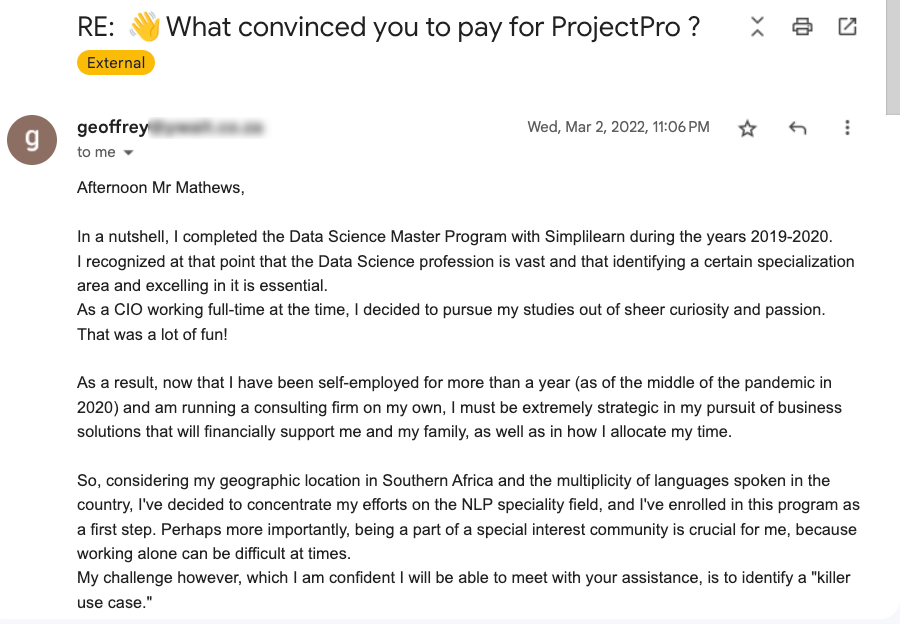
Global Data Community Lead | Lead Data Scientist, Thoughtworks

University of Economics and Technology, Instructor

Data Engineering Manager, Microsoft Corporation

Data Engineering Lead - Uber
Estimating churners before they discontinue using a product or service is extremely important. In this ML project, you will develop a churn prediction model in telecom to predict customers who are most likely subject to churn.
Get started today
Request for free demo with us.
Schedule 60-minute live interactive 1-to-1 video sessions with experts.
Unlimited number of sessions with no extra charges. Yes, unlimited!
Give us 72 hours prior notice with a problem statement so we can match you to the right expert.
Schedule recurring sessions, once a week or bi-weekly, or monthly.
If you find a favorite expert, schedule all future sessions with them.
Source: ![]()
Source: ![]()
Source: ![]()
Source: ![]()
Source: ![]()
Source: ![]()
Source: ![]()
Source: ![]()
Source: ![]()
Source: ![]()
Source: ![]()
Source: ![]()
Source: ![]()
250+ end-to-end project solutions
Each project solves a real business problem from start to finish. These projects cover the domains of Data Science, Machine Learning, Data Engineering, Big Data and Cloud.
15 new projects added every month
New projects every month to help you stay updated in the latest tools and tactics.
500,000 lines of code
Each project comes with verified and tested solutions including code, queries, configuration files, and scripts. Download and reuse them.
600+ hours of videos
Each project solves a real business problem from start to finish. These projects cover the domains of Data Science, Machine Learning, Data Engineering, Big Data and Cloud.
Cloud Lab Workspace
New projects every month to help you stay updated in the latest tools and tactics.
Unlimited 1:1 sessions
Each project comes with verified and tested solutions including code, queries, configuration files, and scripts. Download and reuse them.
Technical Support
Chat with our technical experts to solve any issues you face while building your projects.
7 Days risk-free trial
We offer an unconditional 7-day money-back guarantee. Use the product for 7 days and if you don't like it we will make a 100% full refund. No terms or conditions.
Payment Options
0% interest monthly payment schemes available for all countries.
Have you ever heard of businesses implementing customer churn prediction in machine learning? This project will teach you everything you need to know about customer churn prediction in the telecommunications industry.
Customer attrition prediction is a challenge that almost all industries face, regardless of business size or operational strategy, whether you provide goods or services. It could be challenging to retain your existing customers with the business for as long as possible. Predicting churn rate, knowing your clients' demands, improving customer service, and understanding their reasons for leaving your company are crucial to retaining loyal customers over the long term. This project will help you understand how businesses can implement customer churn prediction in machine learning to retain customers, maintain customer loyalty and boost their revenue.
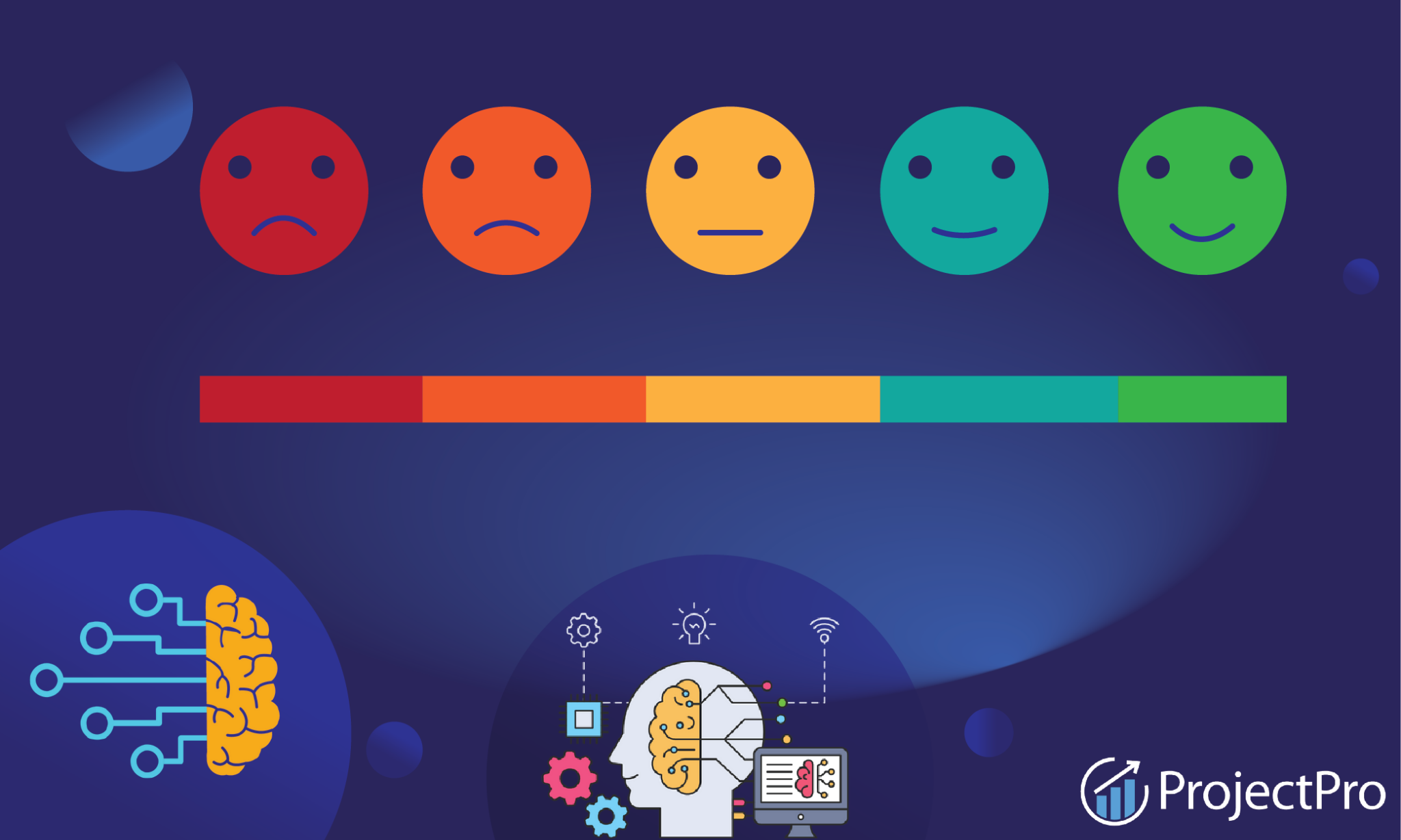
According to research, customer attrition costs businesses more than 1.6 trillion dollars annually. The US daily newspaper subscription market has the most significant turnover rate of any industry at 60%. Around 20-25% and 20-38% of customers churn in the banking and telecommunications sectors. Software-as-a-Service (SaaS) companies reported 5-7% customer turnover rates. Companies use various techniques to handle customer attrition, including machine learning (ML) solutions that identify customers most likely to leave and prioritizing retention efforts to target the most vulnerable customers. One of the most common churn prediction strategies used by organizations is the identification of at-risk clients. This strategy has decreased customer churn by 35% of B2B firms.
In any service-providing industry, when a customer decides to stop using the service, either by canceling the subscription or not paying for the service, it’s known as Customer Attrition. Churn refers to how many customers are not using the service for a certain period.
Hence, customer churn is one of the essential metrics that every business must evaluate to grow. You can calculate the churn rate by dividing the number of lost customers by the last number of customers. Thus, a company churn rate must be as low as possible, ideally 0%.
But why is it so important to calculate the churn rate? Does it affect the business if you lose around 5% of customers? The answer is that acquiring a new customer costs more than retaining the existing ones. Companies can spend less on operating costs to reach new customers by increasing customer retention.
So, we will use advanced ML techniques to predict the potential churners who are about to leave a company’s service and take the necessary steps to prevent it.
This project aims to build a machine learning model to help predict customers likely to churn in the next N months and facilitate taking business actions to reduce the churn.
The Churn Prediction dataset is a dataset from Kaggle for predicting customer churn.
The sample data you will use for this project is:
Telco-Customer-Churn Dataset– This dataset has 7043 rows and 21 columns present.
The training data has 21 features as follows:
Churn – the target variable, if the customer churns or not (Yes / No)
customerID – The unique identification of every customer
gender- If the customer is a male or a female (Female / Male)
SeniorCitizen – If the customer is a senior citizen or not (0 / 1)
Partner – If the customer has a partner or not (Yes/No)
Dependents – If the customer has any dependents (Yes / No)
Tenure – The particular time period (months) the customer has stayed with the company.
PhoneService – If the customer has a phone service or not (Yes/No)
MultipleLines – If the customer has multiple lines or not (Yes/No/No Phone service)
InternetService – If the customer has any internet service or not (DSL/ Fibre optics/ No)
OnlineSecurity – If the customer has any online security (Yes/No/No internet service)
OnlineBackup – If the customer has any online backup (Yes/No/No internet service)
DeviceProtection – If the customer has device protection (Yes/No/No internet service)
TechSupport – If the customer has tech support (Yes/ No/ No internet service)
StreamingTV – If the customer has any streaming TV (Yes/ No/ No internet service)
StreamingMovies – If the customer has streaming movies (Yes/ No/ No internet service)
Contract – The customer term period with the company (Month-to-month, One year, Two years)
PaperlessBilling – If the customer has paperless billing or not (Yes/ No)
PaymentMethod – The payment mode of each customer (Electronic check, mailed check, Bank transfer, Credit card)
MonthlyCharges – The amount that is charged to the customer every month
TotalCharges – The total amount charged to the customer
To predict the customers' likely to churn in the next N months & facilitate taking business actions to reduce the churn.
Language – R
Libraries - Keras, dplyr, mice, ggplot2, recipes
Importing the required libraries and reading the dataset.
Understanding the dataset
Exploratory Data Analysis (EDA)
Data Visualization (Categorical and Numerical data)
Feature Engineering
Missing value imputation
Using Recipe function
Step discretization (Creating intervals)
Step log
Step dummy (One hot encoding)
Step center (Mean centering)
Step scale (Scaling the data)
Model Building
Performing train test split
Keras sequential model building
Compile the model
Fit the model
Model Validation
Confusion Matrix
AUC
Recall value
F1-Score
Model Insights
Feature Importance
Correlation analysis
Save the model – model deployment
Customer churn is the likelihood of a customer quitting using a particular business or service provider. Customer churn prediction is a predictive analytics method that identifies at-risk customers, i.e., customers who may switch to another service provider or abandon their existing one for many reasons. Telecom companies commonly use customer attrition as a key business metric to forecast the number of customers who will leave a particular telecom service provider. Churn is crucial in the telecom sector since it directly impacts the service provider's ability to compete. To maintain profitability, the service provider must acquire new customers, which is not feasible since attracting new clients is expensive and challenging. Churn analysis is used by telephone service providers, Internet service providers, insurance businesses, etc., to forecast profitability because retaining existing clients is much cheaper than finding a new one.

By connecting 90% of the global population, telecommunications has emerged as one of the fastest-growing businesses. It is one of the industries where the customer base is crucial to generating revenue. With the most significant yearly churn rate of 20% to 40%, the telecommunications industry is seriously facing a considerable threat from customer attrition. The wireless telecom sector risks losing 27% of its consumers annually, leading to significant revenue churn. It is also evident that it costs 5 to 10 times more to add a new customer to a business than to retain an existing customer. Due to this, the company should focus more on keeping its existing customers than on acquiring new ones. Therefore, it is now widely accepted that the ideal marketing strategy is to keep current customers or, more simply, not lose customers. Machine learning algorithms are the most effective means of combating the steadily rising customer churn rate.
Customer churn prediction using machine learning helps businesses in several ways.
Machine learning systems can help businesses understand more about their customers by examining their behavioral patterns, which show how likely they are to abandon the company. The behavior patterns of consumers who have already terminated their contracts with the business can be analyzed using a machine learning algorithm and compared to current customers' behavior.
Businesses can earn higher monthly recurring revenue with the help of customer churn prediction using machine learning. Greater profitability is always the outcome of enhancing the user experience and understanding their interests and preferences.
ML-based churn analysis gives businesses reliable predictions of customer preferences, including the critical features in goods and services that ensure customer satisfaction and those they are dissatisfied with. Companies now have crucial information they can use to enhance existing products or develop new ones.
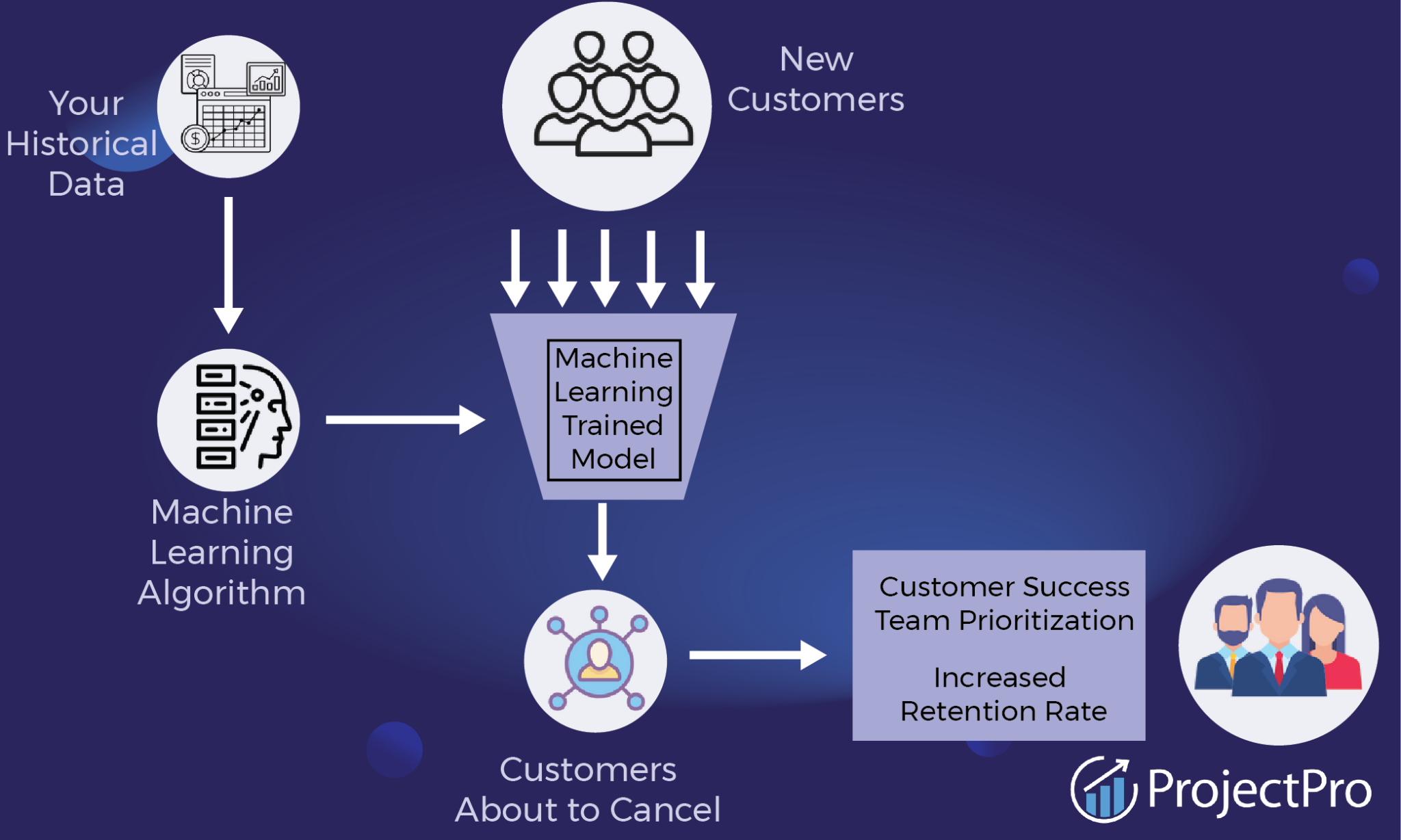
Implementing machine learning to forecast customer attrition can enable you to spot high-risk customers and comprehend the factors behind their inclination to leave. Data scientists require data to work with to undertake any ML project, and researchers specify the information they must gather based on their objectives. The acquired data is then cleaned, transformed, and preprocessed into a suitable format for developing churn prediction models using various techniques such as EDA, feature selection, feature engineering, etc. Another critical aspect of the task is determining the best ML strategies, optimizing the predictive models, and choosing the best performers. You can put a churn forecasting model into production after deciding which one generates forecasts with the maximum accuracy.
In general, there are multiple steps involved in predicting customer retention using ML approaches:
Identifying the problem and the objective,
Data gathering,
Data preparation and preprocessing,
Model development and testing,
Model deployment and monitoring.
Let's explore each phase in more detail.
Data scientists must first decide what queries to address and whether to solve a classification or regression ML problem. Researchers choose which class or category the data points (customers, users, or partners) in the first scenario belong. Typically, churn/non-churner classifications are set based on past data. These labels represent the predicted responses from the ML training. Machine learning calculates how a target variable depends on other input values if you classify predicting customer churn as regression. Regression uses numbers in contrast to classification, which uses categories. You can, for instance, ask for probabilities of churn per client or estimate when a specific customer would be on the verge of leaving.
After deciding the type of ML task (classification/regression), you must determine which data sources are essential for additional forecasting and modeling. You can acquire data from various sources, including customer feedback, social media reviews, analytics services, CRM systems (including sales and customer support records), and more.
At this point, it is necessary to translate historical data into a format that works best with machine learning. The primary objective, in this case, is to ensure that the entire dataset is consistent and that all input items are collected using the same approach. Next, you will form a collection of input features indicating various behavioral patterns. Although behavioral traits can vary from business to business, methods for identifying at-risk customers follow a similar pattern. Using exploratory data analysis (EDA), you can directly analyze the clean data to find any unusual data patterns or relationships between specific attributes and customer attrition. You will move on to feature engineering with the inputs from EDA and create new features from existing ones.
You will create a churn predictive model using machine learning at this stage. The optimal model in speed and accuracy is typically determined by training, tuning, and testing numerous machine learning models. They can represent any practical approach, including random forest, decision trees, and logistic regression. This stage also involves model evaluation, model performance analysis, and parameter tuning stages to acquire the most reliable and precise churn forecast from historical datasets. Logistic regression is suitable for handling binary classification tasks. It can forecast the probability of an outcome (features) by analyzing the relationship between one or more independent factors and a dependent variable. Random forest uses several decision trees to boost prediction accuracy and model stability.
Once you create the churn prediction model for forecasting the churn rate, the best model is available for deployment. It can either be included in already-existing software or used as the foundation for a brand-new application. Data science professionals should constantly track model accuracy for predictive model improvement, i.e., to immediately make necessary changes or upgrades.

The primary challenges that could prevent you from developing a successful churn model are as follows:
Lack of a careful choice of an appropriate churn modeling strategy.
Incorrect or unorganized customer data.
Inadequate knowledge in the subject area.
Product re-evaluation due to churn-causing changes in customer behavior
Selection of KPIs to verify the performance of the churn model,
Poor churn exploratory analysis.

According to Netflix, the optimal user experience is one that users will gladly pay for. Giving consumers the flexibility to continue viewing what they want without interruptions is the only way to survive the OTT streaming battle. Netflix's customer retention strategy generates $1 billion annually and has a 2.3% customer attrition rate. The recommendation engine for Netflix includes detailed data on categorical features such as customer satisfaction, user demographics, etc. Netflix implements customer segmentation by organizing its customers into many categories using all the data available in its customer base. The Netflix recommendation engine evaluates each category's performance and prompts the user to make the right decisions. For its recommendations, Netflix employs a variety of ranking algorithms, including Top-N video ranking, customized video ranking, trending now ranker, continue viewing ranker, and many others. The process of row generation is then used for each algorithm to locate videos that fit a specific row.
The Financial Times bases its onboarding processes on the idea that engagement primarily influences retention. Low usage after signup causes some early churn and restoring engagement after the early stages of the customer lifecycle are tricky. After the first 90 days, engagement becomes more difficult to impact, according to their internal research. Their onboarding aims to increase usage and promote activities that result in long-term engagement to prevent both short-term and long-term churn. It's crucial to monitor the client base to determine who departs and stays (and for what reasons) to succeed at customer retention. Typically, a solid combination of quantitative data (such as app and online analytics) and qualitative surveys (e.g., interviews with existing or ex-customers) provides this knowledge.
According to Jonah Lopin, VP of Customer Success at HubSpot, the Customer Happiness Index, or CHI, is a measure of how much a customer is using inbound marketing in a way that is likely to produce long-term growth. HubSpot utilizes its Customer Happiness Index as a more extensive measure of success than customer attrition. The calculation of CHI takes into account several variables, including how often customers publish and track leads using HubSpot's system, if they execute email and conversion campaigns, whether they use social media and more. By monitoring their customers' CHI scores, HubSpot can retain about 33% of formerly unhappy clients. Furthermore, HubSpot determines customer acquisition costs (CAC) by dividing the overall cost of marketing and sales (Smarketing) by the total number of customers.
Customer churn in telecom, also known as customer defection, or customer attrition, refers to the rate at which customers churn or abandon the services and products of that telecom company. Telecom businesses widely use customer attrition as a crucial business metric to forecast the number of consumers switching telecom service providers.
You can predict churn customers with the help of data mining and ML techniques that calculate the risk of each customer leaving a business. However, calculating each customer's churn factor predicts churn for those preferring a simpler and more efficient approach.
Various factors can cause churn in the telecom industry, such as delayed or bad customer service, higher tariffs, new competitors' entry, poor service quality, etc.
Recommended
Projects
5 Top Machine Learning Projects using KNN
Explore the application of KNN machine learning algorithm with these machine learning projects using knn with source code.
How to Learn Cloud Computing Step by Step in 2024?
Wondering how to learn Cloud Computing in 2024! Check out this blog that guides you through the journey to becoming a cloud engineer. | ProjectPro
How to Ace Databricks Certified Data Engineer Associate Exam?
Prepare effectively and maximize your chances of success with this guide to master the Databricks Certified Data Engineer Associate Exam. | ProjectPro
Get a free demo











